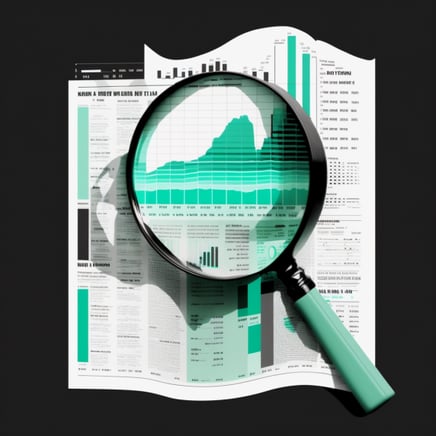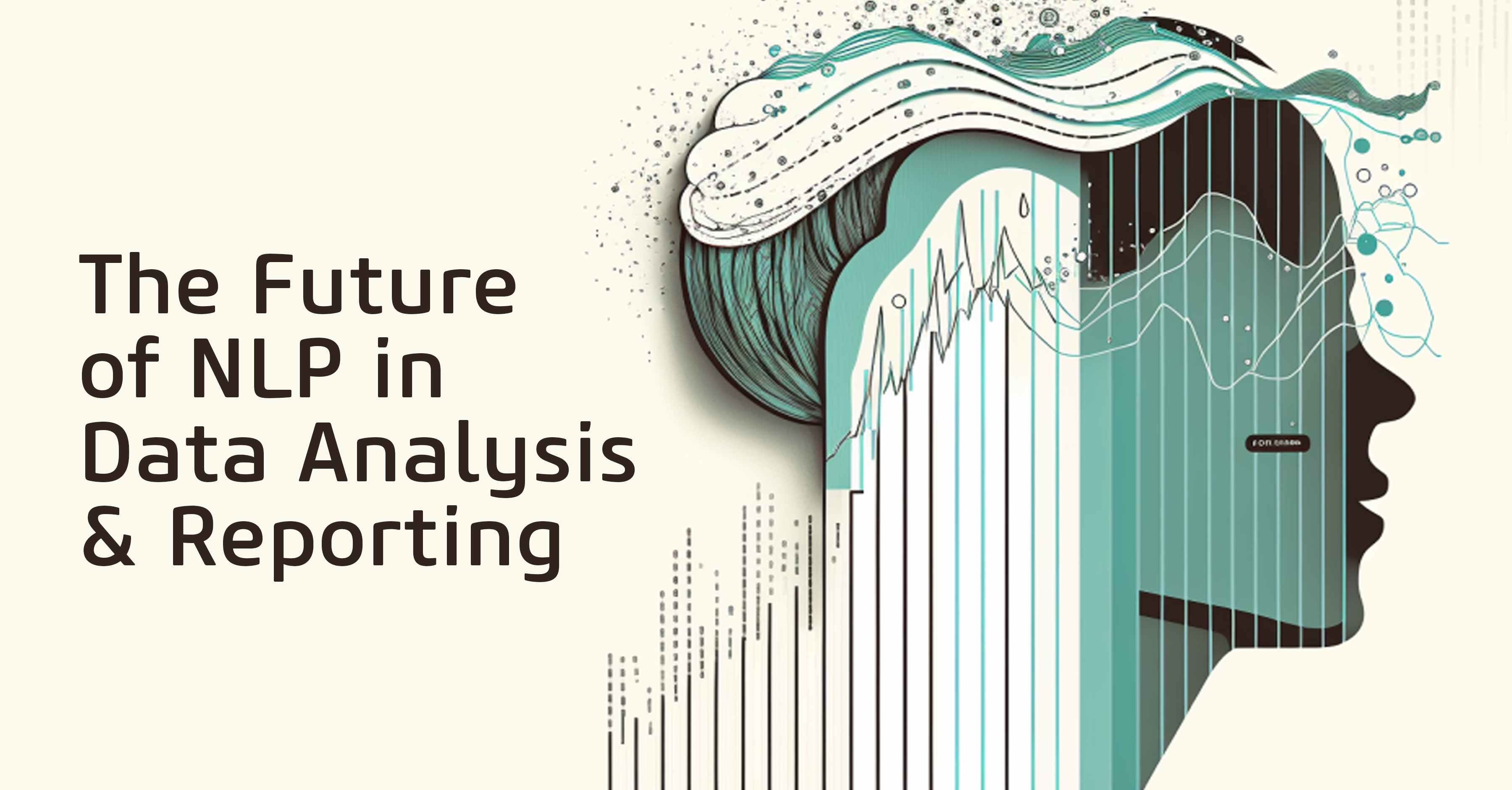Natural Language Processing (NLP) has the potential to revolutionize both the way we analyze data, and how we generate reports from data, by transforming human language into a structured and usable form for machines to understand. This is particularly useful in the fields of data analysis and reporting, where NLP can provide valuable insights, improve accuracy, and increase efficiency in decision-making processes.
In this blog post, we will explore the potential for using NLP in data analysis and reporting, including its applications, advantages, and limitations.
We will provide a comprehensive overview of NLP, including its definition, components, and key techniques and algorithms. We will also examine the benefits of using NLP in data analysis and reporting, such as improved accuracy, increased understanding, and enhanced visualization. We will discuss the challenges and limitations of NLP in data analysis and reporting, including data quality, domain-specific NLP models, and the complexity of NLP algorithms and tools. Finally, we will explore use-cases that can be implemented by organizations, utilizing some of the key techniques and algorithms we will be looking at today, to bring everything back down to planet Earth.
By the end of this blog post, you will have a better understanding of the potential for using NLP in data analysis and reporting, and how it can benefit your organization.
Why Data Analysis & Reporting Matters: Insights and Opportunities
Data analysis and reporting play a critical role in modern businesses and organizations, helping decision-makers make informed choices based on data-driven insights. With the growth of data as a focus within organizations, and the increasing importance of data-driven decision-making, the demand for effective and efficient data analysis and reporting has never been higher.
However, traditional data analysis and reporting methods can be time-consuming, error-prone, and difficult to understand, especially for non-technical users. This is where the potential for using Natural Language Processing in data analysis and reporting becomes clear. NLP can automate many of the manual and time-consuming tasks involved in data analysis and reporting, while also delivering a more user-friendly and accessible way of discovering and presenting data insights.
The use of NLP in data analysis and reporting can bring many benefits to an organization, including increased accuracy and efficiency, improved understanding and insights from data, and enhanced data presentation and visualization. By harnessing the power of NLP, organizations can gain a competitive advantage and make more informed and effective decisions based on their data.
Unlocking the Mysteries of NLP: Understanding the Basics

Natural Language Processing (NLP) is a subfield of artificial intelligence (AI) that focuses on the interaction between computers and humans using natural language. When we say “natural language”, what we mean is something akin to “conversational language”.
It is the process of converting human language into a structured and usable form for machines to understand and analyze. This involves a range of techniques and algorithms, including text classification, sentiment analysis, named entity recognition, topic modeling, and summarization, among others.
At its core, NLP relies on deep learning algorithms and models that can analyze and understand natural language inputs, such as text, speech, and even images. These algorithms and models can identify patterns and relationships in language data, extract meaningful insights, and present the data in a usable and understandable form.
The advancement of NLP has been driven by the growing demand for more effective and efficient ways to analyze and report on large amounts of unstructured data, such as customer reviews, social media posts, and other forms of text data. NLP is now widely used across a range of industries and applications, from customer service and marketing to healthcare and finance. By leveraging the power of NLP, organizations can gain valuable insights from their data, and make informed and data-driven decisions.
In the following sections, we will explore the applications, advantages, and limitations of NLP in data analysis and reporting in more detail.
Leveraging NLP for Better Data Analysis & Reporting: A Deep Dive into Key Applications
The applications of NLP in data analysis and reporting are diverse and varied. Some of the most common uses of NLP in data analysis and reporting include:

- Sentiment Analysis: NLP can be used to analyze customer feedback and reviews, social media posts, and other forms of unstructured data to determine the sentiment behind the text.
This can provide valuable insights into customer satisfaction and help organizations to improve their products and services.
- Text Classification: NLP can be used to classify text data into different categories, such as spam vs. non-spam, positive vs. negative, and relevant vs. irrelevant. This can be useful for filtering and organizing large amounts of text data.
- Named Entity Recognition: NLP can be used to identify and extract specific entities from text data, such as people, organizations, locations, and products. This can be useful for organizing and categorizing data and generating reports.
- Topic Modeling: NLP can be used to identify the topics or themes within a large body of text data, and to determine which documents belong to which topic. This can be useful for gaining a better understanding of the content, grouping similar documents together, and organizing information for easier analysis.
- Summarization: NLP can be used to automatically summarize long documents, reports, and other forms of text data, providing an executive summary or condensed version of the information. This can save time and improve understanding for non-technical users.
These are just a few examples of the many applications of NLP in data analysis and reporting. By leveraging the power of NLP, organizations can gain valuable insights from their data, automate manual tasks, and make informed and data-driven decisions.
The Benefits of NLP in Data Analysis & Reporting: Driving Better Decisions

The use of NLP in data analysis and reporting offers several key advantages, including:
- Increased efficiency: NLP can automate manual tasks such as text classification, sentiment analysis, and data extraction, saving time and reducing the risk of errors.
This can increase efficiency and productivity, allowing organizations to focus on more strategic tasks.
- Improved accuracy: NLP algorithms are trained on large amounts of data and can accurately process vast quantities of text data, providing insights that would be difficult or time-consuming for humans to extract. This can improve the accuracy and reliability of data analysis and reporting.
- Better insights from unstructured data: NLP can extract insights from unstructured text data, such as customer feedback, social media posts, and other forms of unstructured data, that would be difficult to analyze using traditional data analysis methods. This can provide valuable insights into customer sentiment and preferences, helping organizations to make data-driven decisions.
- Accessibility: NLP can simplify complex data and present it in a clear and accessible way, improving understanding and communication of data insights. For example, NLP can summarize long reports, extract tables and charts from text data, and generate data visualizations, making it easier to understand and communicate data insights.
- Automation of manual tasks: NLP can automate manual tasks such as text classification, sentiment analysis, and data extraction, reducing the risk of errors and freeing up time for more strategic tasks. This can help organizations to stay ahead of the curve in terms of data analysis and reporting.
These are just a few of the many advantages of using NLP in data analysis and reporting. By leveraging the power of NLP, organizations can gain valuable insights from their data, automate manual tasks, and make informed and data-driven decisions.
Overcoming the Challenges of NLP in Data Analysis & Reporting: Understanding the Limitations
Despite its many advantages, NLP in data analysis and reporting is not without its challenges and limitations. Some of the key challenges and limitations include:

- Data quality: The accuracy of NLP algorithms depends on the quality of the data they are trained on. If the data is biased or contains errors, the results of NLP analysis may also be biased or incorrect. This can limit the effectiveness of NLP in data analysis and reporting.
- Interpretability: NLP algorithms are complex and can be difficult-to-impossible to interpret, making it challenging to understand the reasoning behind the results of NLP analysis. This can limit the transparency of NLP in data analysis and reporting and make it difficult to communicate insights to stakeholders.
- Computational requirements: NLP algorithms are computationally intensive and require significant computational resources to run. This can limit the scalability of NLP in data analysis and reporting, making it challenging to process large amounts of data in a timely manner.
- Domain expertise: NLP algorithms require domain expertise to be properly trained and configured. This can limit the accessibility of NLP in data analysis and reporting, requiring organizations to invest in domain expertise to fully leverage the benefits of NLP.
- Ethical considerations: NLP algorithms can raise ethical considerations, such as data privacy, data security, and algorithmic bias. Organizations must carefully consider these ethical considerations when using NLP in data analysis and reporting.
Despite these challenges and limitations, NLP remains a powerful tool in data analysis and reporting. By understanding the challenges and limitations of NLP, organizations can better leverage its advantages and make informed and data-driven decisions.
Innovative Insights: NLP Brings a New Level of Intelligence to Business
The use cases for NLP in data analysis and reporting are endless.
Organizations of all types have the opportunity to gain a wide variety of advantages
by utilizing these techniques and algorithms.
Are you looking to learn more about how NLP can advance YOUR organization?


.png)


Submit a Comment